
Hygge & The Culture of Danish Design
On 17th October Domus co-hosted a design, culture and architecture presentation evening at HKS Architects' new office on Great Titchfield Street in Fitzrovia in collaboration with Fritz Hansen and Hørning.
We organised five speakers from the world of architecture, design and lifestyle whose work is influenced by hygge [pronounced hue-guh] and the Danish aesthetic to deliver short presentations encompassing a range of topics from residential and stadium design to colour trends, food and culture. The focus was to gain an understanding of the global influence of Danish design, specifically what makes it so highly regarded around the world, and to offer a cultural insight into the Danish approach to design and living.
Main image above: Summerhouse Kandestederne designed by C.F. Møller. Photo by Torben Eskerod

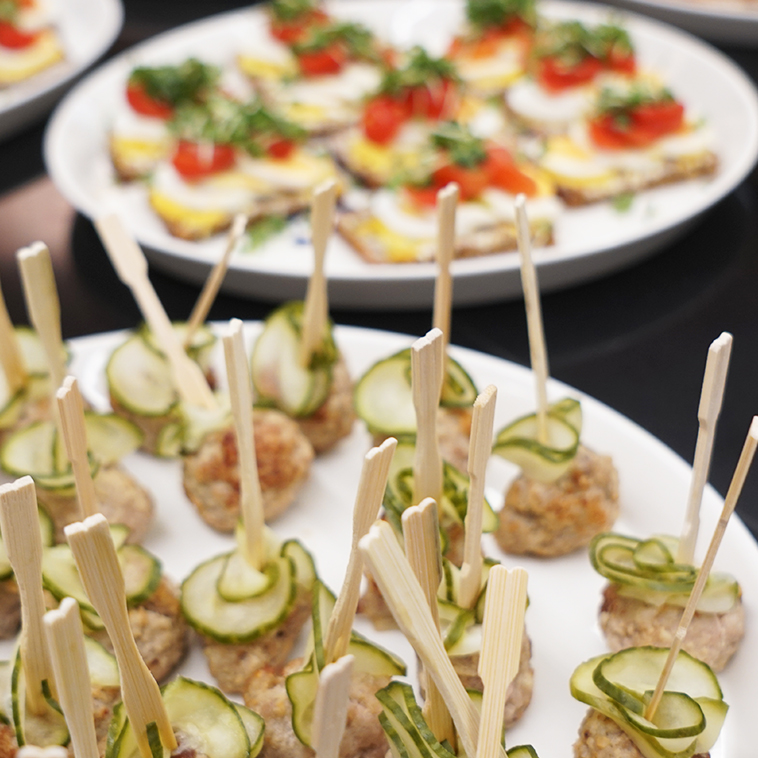
Canapes and cocktails were made by Snaps+Rye, a contemporary Danish restaurant situated on Golborne Road in Notting Hill, who served Danish ‘snitter’ and ‘mini frikadeller’ canapés alongside Nordic mojitos. The drinks were made using their homemade dill snaps and served in terracotta coloured ceramic ‘Nordic cups’. Founded by Danish-English husband and wife team Kell and Jacqueline Skött, Snaps+Rye serve ‘new Nordic cuisine’ with a focus on quality produce and provenance, recreating a little of Copenhagen’s culinary culture in west London. Kell Skött also spoke at the event, explaining how, in pursuit of the Danish good life and aligning themselves with Danish ‘values’ and heritage, they offer a seasonal and sustainable menu with a modern twist on classic Scandinavian dishes, baking their own rye bread and making their own house-infused ‘Akvavit’ Snaps, which was used in their delicious Nordic mojitos.
The talks were introduced by Grant Kanik, Associate Principal at HKS, who spoke about the minimal Danish aesthetic they embraced, which included use of Hørning solid wood ‘Douglas Fir’ planks and furniture from Fritz Hansen throughout the office space.
“When it came to our approach with the design of this space, and what inspired us as designers, Danish design was at the core of what we did because there were three overriding threads behind what we did… First and foremost since being architects, it was about functionality. We also wanted a timeless space, and ultimately we wanted a very human space, and that naturally led us to align ourselves with Danish design principles that you’ll see threaded throughout the office. The space is very minimalist. The space is a backdrop for what we do and our creative process. What we love about the flooring is that it has a very spartan quality about it, but it is very welcoming. It’s very natural, but it’s very technical. It’s the one big design statement in the space, and that statement is that it’s a studio and not an office.”
Read more about the HKS office design and Hørning wood flooring here.
The relationship between inside and outside in Scandinavian residential architecture

Rolf Nielsen, Associate Partner at C.F. Møller was the first speaker of the evening, and chose to speak about the relationship between the dwelling and outside spaces in Scandinavian residential architecture. He commented that this relationship between inside and outside “is at the very centre of Danish living”, and can help create a warm and welcoming atmosphere in the home. He went onto explain how the international modern movement has been absolutely critical for the way that Danish architecture developed from the 1920s onwards.
In terms of the modern movement, Nielsen focused on ‘Bedre Byggeskik’ which roughly translates into English as “Better buildability”. He explained that this practice cemented the integration of the modern movement within Danish architectural practice. And how out of this was born Danish functionalism, specifically the way that Danish architects approach the modern movement and translate it within their designs.
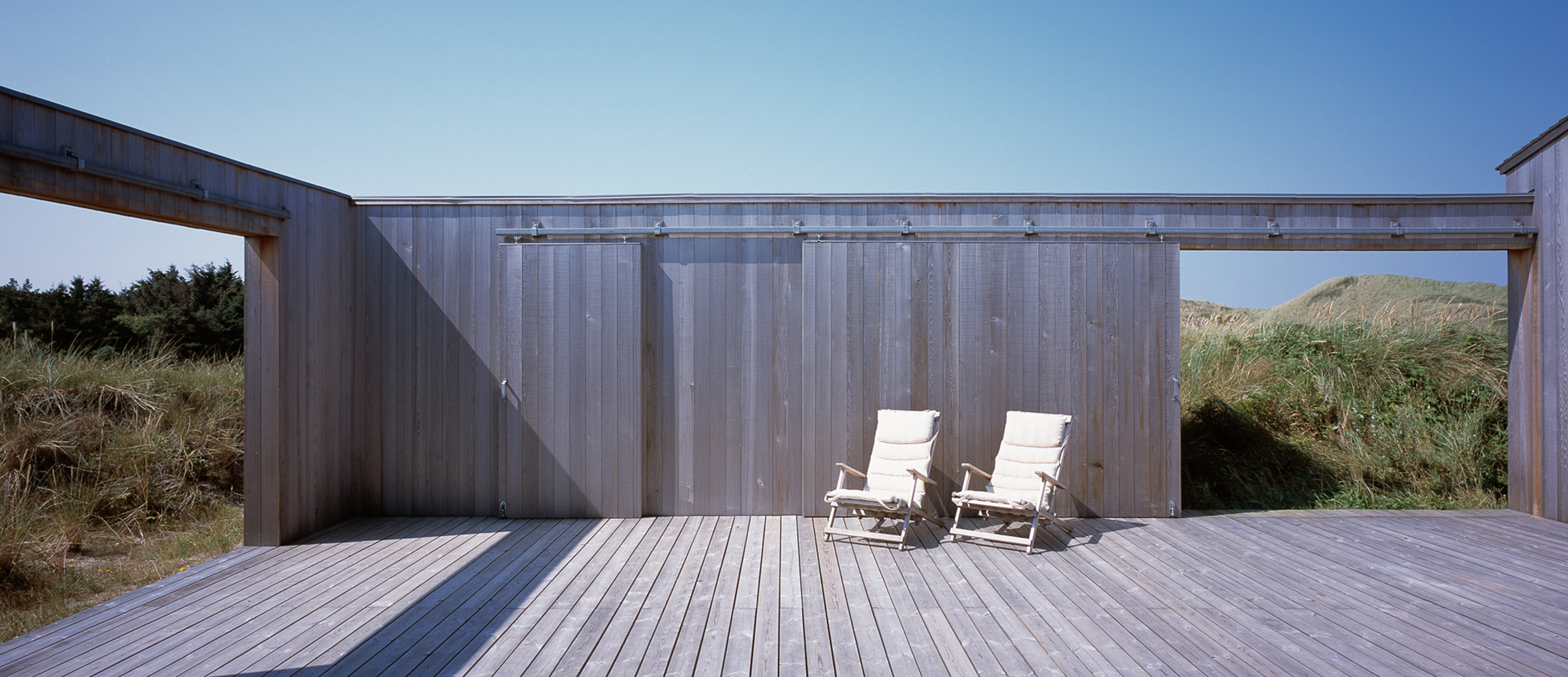
Image above: Summerhouse Kandestederne designed by C.F. Møller. Photo by Torben Eskerod
He referenced the work of Danish architect Jørn Utzon, who was most famous for designing the Sydney Opera House, but who has also designed a vast amount of residential architecture both in Denmark and around the world. In particular he looked at his design of the ‘Kingohusene’ Kingo Houses in Helsingør, Denmark, which have a very intimate relationship with their gardens. And in a very social, democratic and ultimately Danish sense, each of these gardens opens up to a large communal shared area.
Other architects whose work Nielsen showed included Arne Jacobsen, Mads Møller, C.F. Møller and the English architect Peter Aldington, whose work at Turn End in Haddenham, Buckinghamshire is very much influenced by Danish architectural practice and its interpretation of the modern movement. In terms of the architecture he spoke about, all of the homes had a number of things in common, including a simple floorplan, use of ‘honest’ and quality materials, and a close and immediate relationship with the outside landscape.
Jakob Holm, Press Attaché at the Embassy of Denmark in the UK, spoke about Danishness and what constitutes Danishness, focusing on key Danish societal values including equality, trust, simplicity, efficiency and of course, hygge, which can be also be applied to design and architecture. First and foremost he mentioned the high degree of gender equality and the shorter distance between employer and employee in Danish society, explaining that core values exist in Danish society because of the rural farming cooperatives who laid the ideological values for Denmark as a welfare state and export nation, spreading from rural areas to Copenhagen rather than the other way around. ”Equality is only possible when there is a high degree of mutual trust, which is the most valuable asset in Denmark, and means it has a fantastic climate for business”.
What constitutes Danishness?
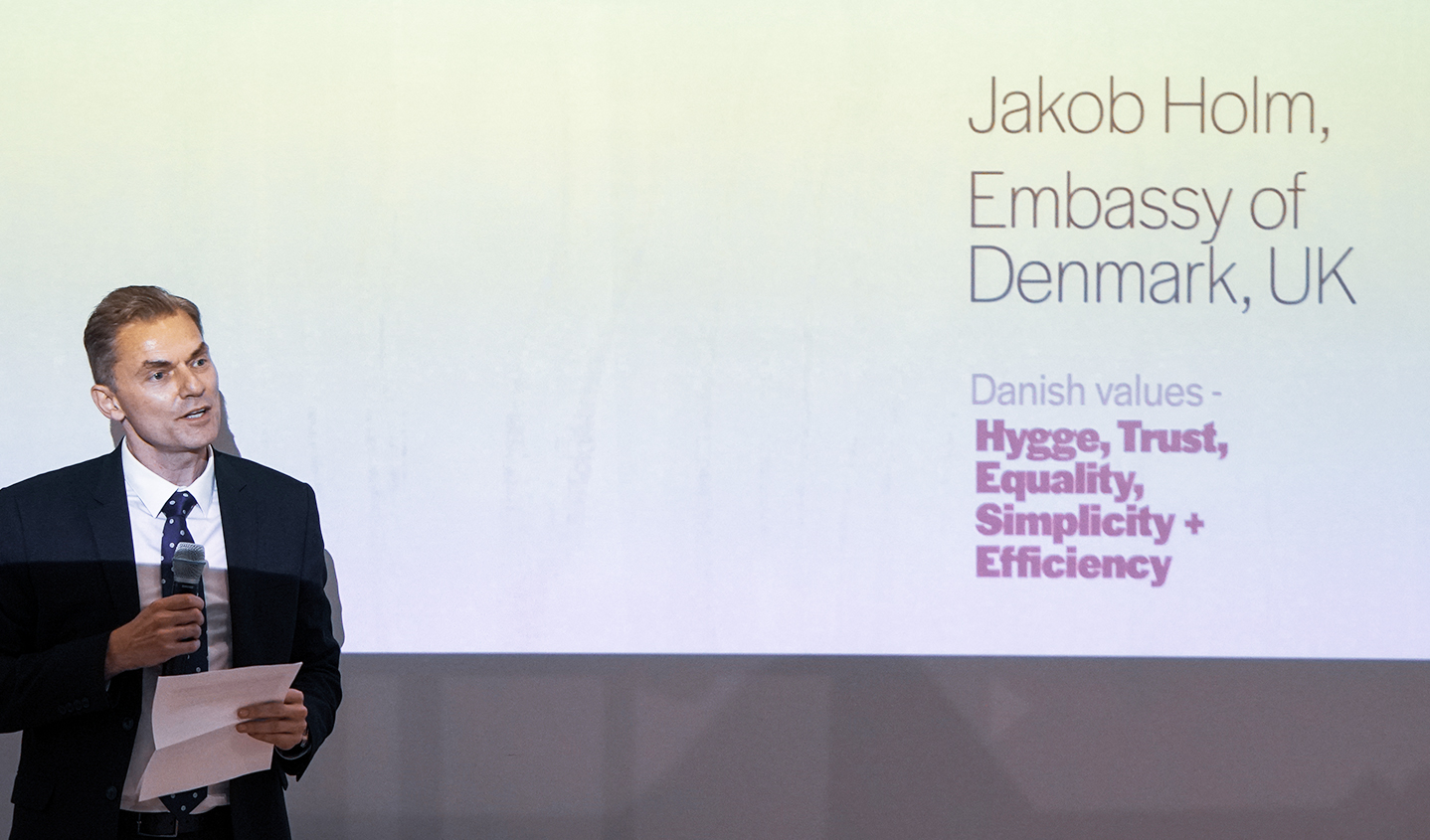
He went onto explain the importance of efficiency in Danish society, and the emphasis on saying ‘thank you’, which places a focus on the end result rather than process, claiming that ”Danes are focused on delivering an efficient result”. In terms of design, Holm commented how Danish design conveys function and efficiency, and a love of simplicity which you can see in architecture in the purity and straight lines. Holm believes that this is due to the Danes’ Protestant roots. Danish churches are very minimal and bare inside (because your eyes should only be directed to God) in comparison to highly decorative Catholic churches. As a rule, Danes don’t have fancy ornaments – it’s seen as needless boasting, which would break the ‘rules’ of equality.
Holm also spoke about hygge, of which he says the foundation is “trust and equality” and “giving something ordinary a special context” which can be done through “simplicity, spirit, warmth and happiness”. He quoted Louisa Thomsen Brits, author of The Book of Hygge, who says: “Hygge happens when we commit to the pleasure of the present moment in its simplicity”.
Danish design, Holm says, is “made for human beings; for equals, by equals and not just for show. It is always warm and welcoming and in no way flash, as that would ruin the idea of equality”.
Paul Hyett, Past President of RIBA; Principal and UK Sports Director at HKS Architects began his talk by discussing the tradition of great Danish architects and their achievements in the 20th and 21st centuries, highlighting the fact that Denmark has one architect per 775 people. He explained how Denmark has a high level of architectural talent and resource which has performed with extraordinary power and effect around the world, and because of that, Danish architects carry an enormous reputation.

Image above: Royal Arena, Copenhagen. Designed by HKS Architects in association with 3XN Architects.
In 2016 and 2017 HKS worked on the design of the Royal Arena in Copenhagen with Danish practice 3XN which is a project that has helped raise HKS’ sports profile. The 35,000-square-metre stadium is situated in the Danish capital's residential Ørestad Syd area and was designed to host concerts and international sporting events. Its location in a densely urban area prompted the project team to focus on ensuring that the venue contributes to the local community by encouraging public engagement with its spaces and facilities.
The project design was led by Kim Nielsen, co-founder and principal of 3XN, and a prominent figure in Danish and international architecture, and Paul explained how ‘trust’ was at the very heart of HKS’ relationship with 3XN during the design stages. He commented how 3XN as a practice demonstrate collaboration and teamwork at the highest level, with a lot of talent and energy and a ‘blue sky thinking’ approach. Paul said that “working with 3XN was a rich experience to be involved with. Having worked in Scandinavia, in Denmark, in Copenhagen... has enriched the design culture at HKS”.
His last words were focused on the “wonderful tradition of design and great tradition of trust within Danish culture”. To demonstrate the level of trust, Paul explained that no official contract was ever drawn up when working on the design of the Royal Arena with HKS, but simply a matrix of responsibilities to satisfy the insurers.
Calzada Fox, run by Carolina Calzada and Justine Fox, specialise in colour trend forecasting in the design industry and share insights on colour trends based upon science, psychology and visual culture. Their talk was focused on Danish colour influences for 2020, explaining how colour has to be at the very beginning of the design process. Justine Fox, who delivered the colour trends forecast, explained how, since Denmark can be very dark because of the minimal daylight hours in winter, Danish design often focuses on how to capture more light...
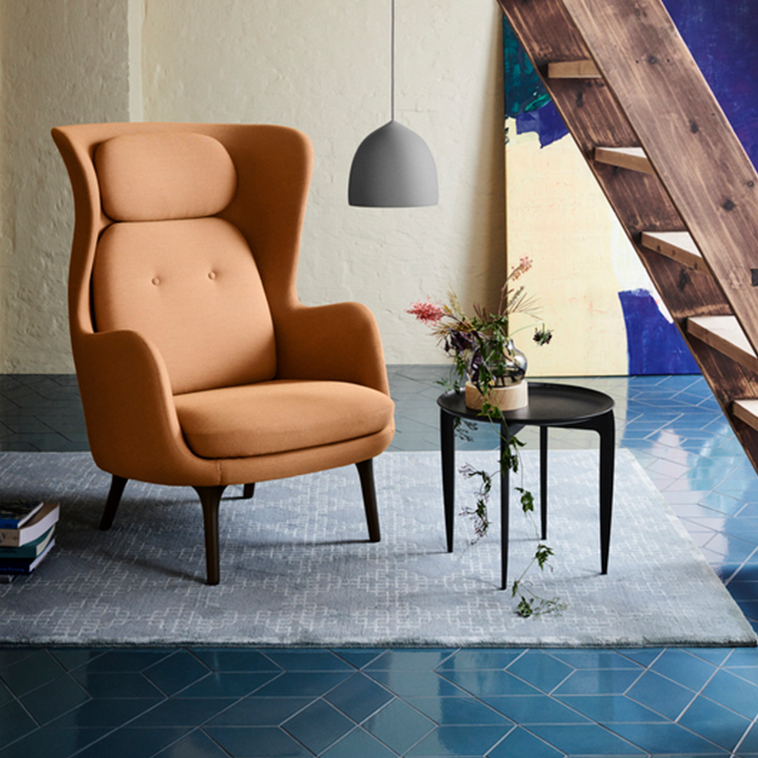
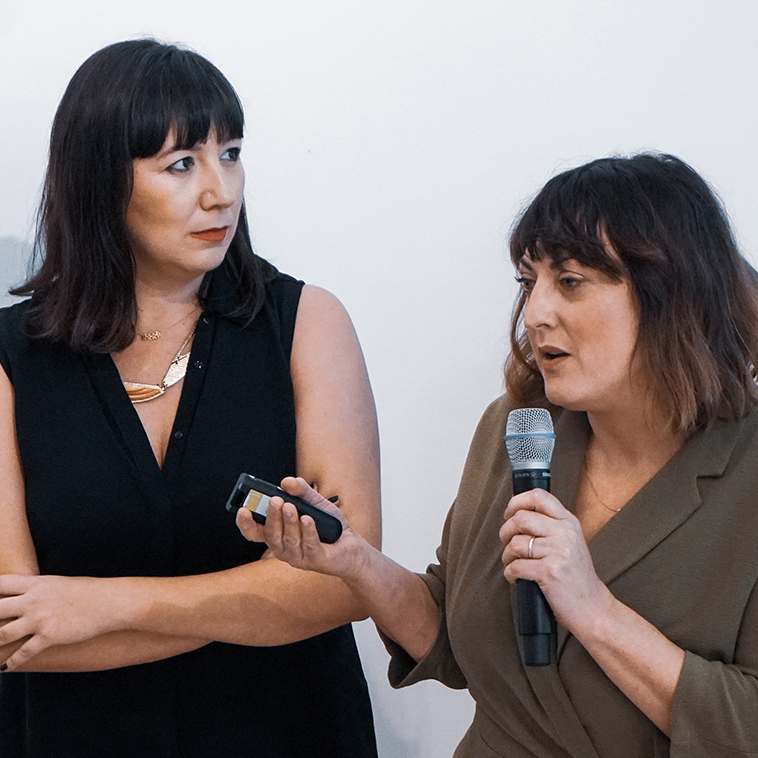
Photo above courtesy of Republic of Fritz Hansen
Fox believes that when you delve into it “Danish design is not cold and not achingly minimalist. There’s a warmth which comes through in the colour palette”. There is often a reference to nature, with colours such as rich warm cinnamon, which is warm, comforting and cosy. She said that you will also see a saturated use of colour in Danish design, which is very considered, very warm and ‘light capturing’.
She also explained that the colour ‘millenial pink’ has roots in Danish design... “When we look at Danish design towards the new crafts area, new Danish designers are very focused on the capture of light, and this affects colour choices”. She highlighted that the Danes tend to use colour in contrast with natural materials, but that the tones are very important, and they are freshening up. Pastels such as sage green and orange will become prominent, with a move away from pink towards more salmon and melon tones.
Danish colour influences for 2020
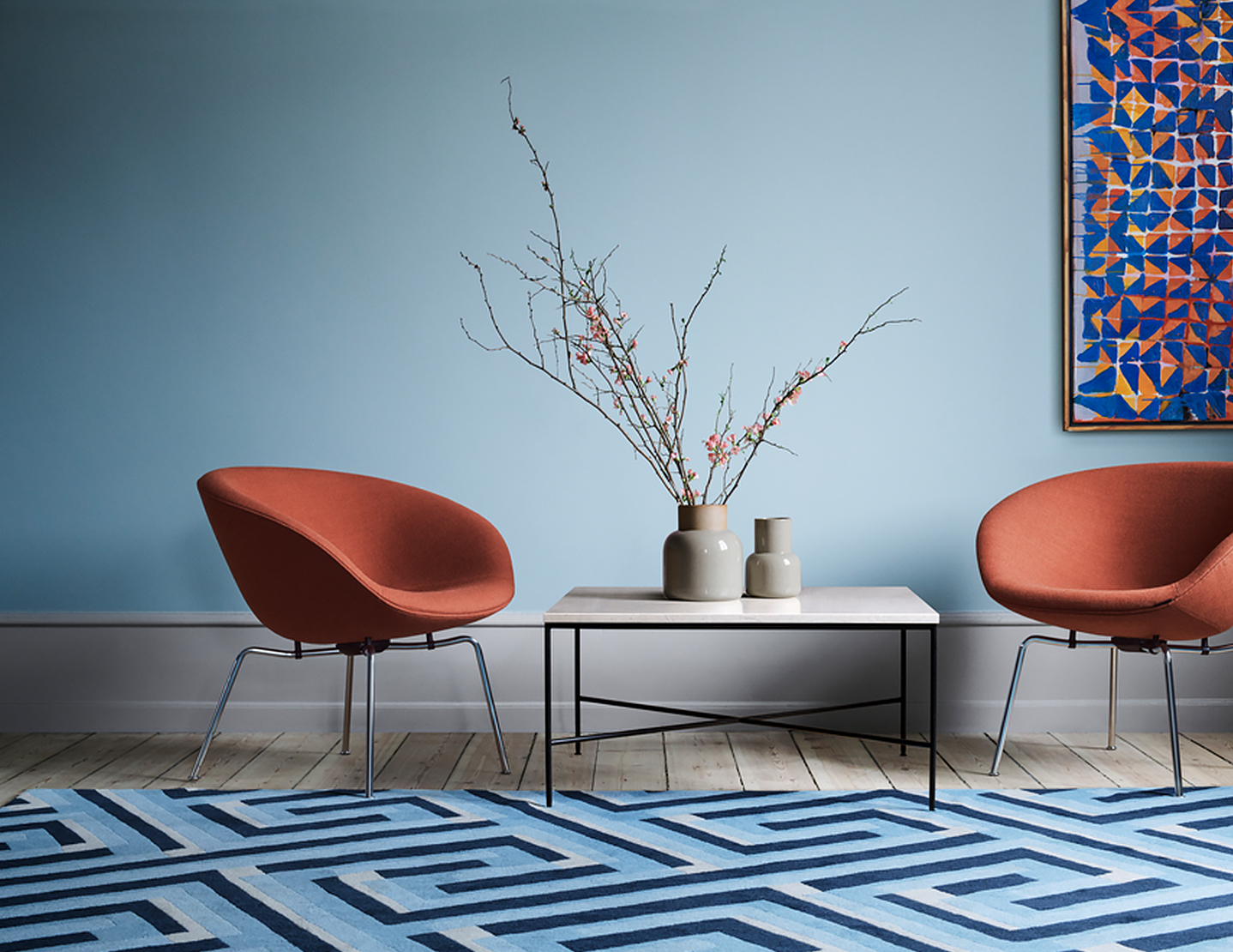
Photo above courtesy of Republic of Fritz Hansen
Fox spoke about younger Danish designers such as Amalie Bo and Netter Andresen are using less of the grey which has been so prominent for so long. The two designers have even launched a creative collaboration called ‘Don't Go Grey’ for a commission at Hillerød Music School, which operates within design in the cross section between art and architecture. Although Danish design is simple and functional, there’s always been a link with industrialism and new technologies which you will see in the colours coming through… “There is a search for new materials, and colour is informed by the materials themselves”.
This can be seen in the work of designers including Danish sculptor Carl Emil Jacobsen who turns bricks and stones from demolished buildings into glorious pastel pigments. Other young Danish designers who are also using colour and materials in new and interesting ways include Astrid Tolnov, Gurli Elbækgaard and Aurora Borealis, who all offer an exciting view of how Danish design is pushing new boundaries.
Visit our showrooms
Share this news